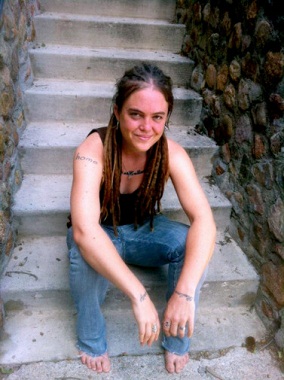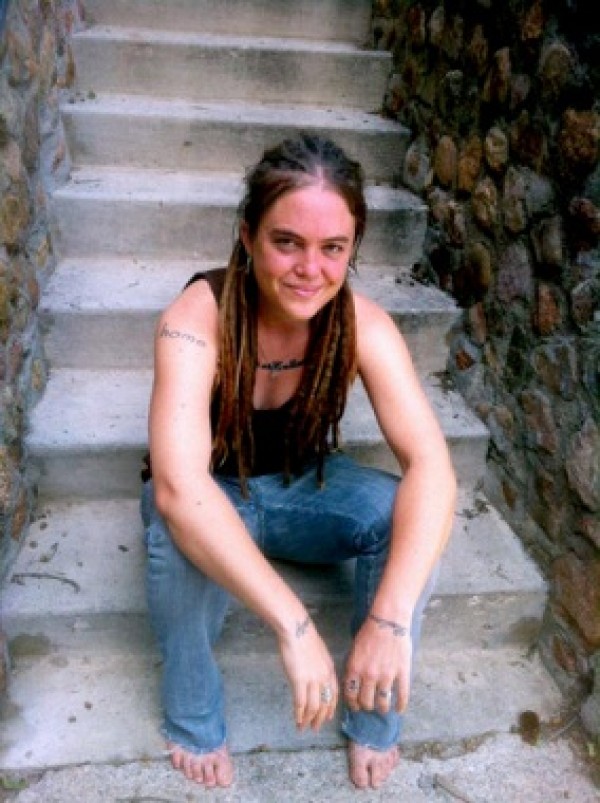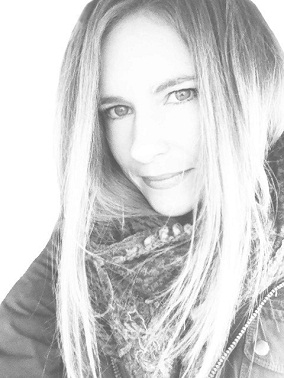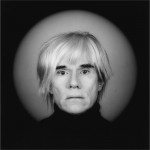 Managing Editor and Nonfiction Editor Chelsey Clammer talks about her journey to Eckleburg, how she craves to dive into a text, and how to approach writing as if your sanity depended on it.
Managing Editor and Nonfiction Editor Chelsey Clammer talks about her journey to Eckleburg, how she craves to dive into a text, and how to approach writing as if your sanity depended on it.
Q) How did you learn about/become involved with Eckleburg?
Chelsey Clammer: I submitted an essay to Eckleburg thinking they might like the tone of it. Sure enough, “The Mountains are Bloody Beautiful” was accepted and published in the summer of 2012. Upon acceptance of my essay, Editor In Chief Rae Bryant approached me and asked if I wanted to write a weekly humor column. Hell yeah! And a few months later I was invited to be an Assistant Nonfiction Editor. Hell yeah again! And then a few months after that I was invited to be the Nonfiction Editor. Again! Again! Hell yeah! After becoming the Nonfiction Editor, I thought I was out of Eckleburg-related situations to which I could say hell yeah. And then this happened: it is now a year after I submitted “The Mountains are Bloody Beautiful”, and I find myself as the Managing Editor. I am still completely in awe that I get to be so involved with a journal I have loved for such a long time. To say the least, it’s been a splendid year. Hell yeah it has.
Q) What genre do you edit/what role do you have?
CC: My main focus is reading and editing nonfiction, though if any of the other departments needs some feedback or another opinion on a submission, then I shape shift into a reader of other genres. As Managing Editor, I get to help the incredibly talented Eckleburg staff with whatever they need help on—reading, editing, formatting, brainstorming, planning, &etc. So I jump around a lot with my duties, which is something I absolutely adore. Also, I’m teaching the Eckleburg online writing workshops with the help and guidance of the most amazing, passionate, and intelligent woman and editor in the entire world, ever, Rae Bryant.
Q) What are you looking for in submissions?
CC: Something odd. Something beautiful. Something raw. Something lyrical. I want those quirky ideas and I want that vulnerable writing. I want to read pieces that don’t force or overkill a theme, but rather stories that trust the reader will understand what all is going on, will make their own conclusions as to who these people are. I want to read pieces that I can’t resist, pieces in which all I ever want to do with the rest of my life is dive into that text, to soak it in, to move with its currents, to watch how it moves me.
Q) What have been one or two of your favorite pieces you have seen in Eckleburg so far?
CC: I loved Amelia Neirenberg’s essay “We are Woman.” After reading just the first few paragraphs, I fell in love with its pace and rhythm, with the high quality of writing, and with how she digs deep into discovering how different generations of women influence each other throughout their lives, how they come to know they are forever connected with who came before them and who will come after them. This essay completely took me away, especially when I found out the author is still in high school.
Q) What are some publications you have/accomplishments you want to share?
CC: In 2012 I won the Editor’s Pick Award from Revolution House for my essay “BodyHome.” Later on that year, I also won another Editor’s Pick Award for another essay, this one called “I Have Been Thinking About” from Cobalt. I’m also really proud of the publication of my essay “Cut” in The Rumpus, specifically because I am so vulnerable in that essay and yet it got out there and I had some really good responses to it. Finally, The Coachella Review has published two of my essays in the past (“Sabrina” and “Sarah”), and the editors over there are so encouraging and interested in their authors. I loved working with them, and was excited when they interviewed me.
Q) How do you approach writing?
CC: As if it’s the only thing that keeps me tied to this world, that keeps me connected to everyone here—whether I know them or not—and I come to it (in my good and hopeful moments) with a compassionate understanding. As in, I come to it with the intention of just writing, allowing my brain and body and soul to open up to where ever that writing might go, and not berate myself for not writing profound sentences on every page. It doesn’t work like that. I simply write in every hour of the day that I can, and I open up to whatever might happen with that writing. Mainly, I approach my writing like this: “I’m responsible for the effort, not the outcome.”
Q) In 5 words or less, describe what kind of a journal you think Eckleburg is.
CC: Paragon of feminist & intelligent creativity. (An ampersand doesn’t count as a word, right?)
Q) Any other promotion/interesting fact/random tid bit you want to share?
CC: I’m enrolled in the Rainier Writing Workshop program this year, and I can’t wait to see where my writing goes because of it. And I’m also running those Eckleburg writing workshops with Rae Bryant that YOU JUST HAVE TO CHECK OUT BECAUSE THEY KICK SO MUCH ASS! I got me a website: www.chelseyclammer.com. I run 50 mile races. I smoke a pack a day. And my favorite activity as a child was to suck on my older sister’s toe.
Chelsey Clammer received her MA in Women’s Studies from Loyola University Chicago. She has been published in THIS, The Rumpus, Atticus Review, Sleet, The Coachella Review and Make/shift among many others. She received the Nonfiction Editor’s Pick Award 2012 from both Revolution House and Cobalt, as well as Best of the Net and Pushcart Prize nominations. She is a weekly columnist for The Doctor T.J. Eckleburg Review as well as the Managing Editor, Nonfiction Editor and a workshop instructor for the journal. She is also the Creative Nonfiction editor for The Dying Goose, and a volunteer prose and poetry reader for Memoir Journal. She is currently finishing up a collection of essays about finding the concept of home in the body, as well as a memoir about sexuality and mental illness. Chelsey lives in Denver, CO.





